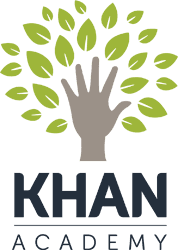So, for my Research and Reflection class, my 20 (ugh) page paper will be on the benefits of integrating Web 2.0 technology in today's K-12 classrooms. While doing research, I came across the Khan Academy.
The Khan Academy logo
"The Khan Academy is an organization on a mission. We're a not-for-profit with the goal of changing education for the better by providing a free world-class education to anyone anywhere." Turning the idea of traditional classroom education on it's ear, the Academy focuses on free education for everyone, using YouTube and the like to express subjects and ideas that can be absorbed by millions of 'students' at their own, individualized pace. Here's a sample video, giving an introduction to light:
As an example of how individualized the Academy's uses are, Wired Magazine recently showcased Matthew Carpenter, a 10-year-old who, with the help of the Academy, is succeeding in doing inverse trigonometry.
From the article, which you can read in full here:
“It took a while for me to get it,” Carpenter admits sheepishly.
Carpenter, who attends Santa Rita Elementary, a public school in Los Altos, California, shouldn’t be doing work anywhere near this advanced. In fact, when I visited his class this spring—in a sun-drenched room festooned with a papercraft X-wing fighter and student paintings of trees—the kids were supposed to be learning basic fractions, decimals, and percentages. As his teacher, Kami Thordarson, explains, students don’t normally tackle inverse trig until high school, and sometimes not even then. But last November, Thordarson began using Khan Academy in her class. Students, or anyone interested enough to surf by, can watch some 2,400 videos in which the site’s founder, Salman Khan, chattily discusses principles of math, science, and economics (with a smattering of social science topics thrown in). The videos are decidedly lo-fi, even crude: Generally seven to 14 minutes long, they consist of a voice-over by Khan describing a mathematical concept or explaining how to solve a problem while his hand-scribbled formulas and diagrams appear onscreen. Like the Wizard of Oz, Khan never steps from behind the curtain to appear in a video himself; it’s just Khan’s voice and some scrawly equations. In addition to these videos, the website offers software that generates practice problems and rewards good performance with videogame-like badges—for answering a “streak” of questions correctly, say, or mastering a series of algebra levels. (Carpenter has acquired 52 Earth badges in math, which require hours of toil to attain and at which his classmates gaze with envy and awe.):
What do you think? Should we be placing our youth's educational growth in the hands of YouTube? Or should we shun such talk, and stick to tradition? A combination of the two? Leave some comments below.

I think that this is an interesting concept; however, it seems to take the job away from the teacher and, in some cases, make classroom learning pretty obsolete. In the example of Matthew Carpenter, why should he be expected to sit and learn about fractions when he is doing inverse trigonometry? Or does he simply sit at the computer and watch these videos while his classmates listen to the teacher explain cross-multiplication? Or does the teacher have all of the students watch these youtube videos of math at their own level rather than teaching them? I guess that I need a beter idea of what this use of Khan Academy looks like before I can give you my full opinion on the matter.
ReplyDeleteAs I understand it right now, though I can certainly see the benefits to the academic growth of driven students who are willing to challenge themselves, I feel that this sort of use of youtube in the classroom may actually hinder some of the other learning that takes place in the classroom. For example, if Matthew is this far ahead of his fellow students, how does he interact in the social structure of the class room? In elementary school, especially, one of the largest and more important aspects of classroom learning is the development of social skills. From what I remember about my 5th and 6th grade experience, if one student is much more advanced in his or her understanding of the topic at hand, the other kids either pick on that student mercilessly or view them as a teachers pet and have no desire to interact with them. This type of peer rejection can cause long term damage to one's sense of self. It may be interesting to look at the effect that this type of teaching has on the social structure in classrooms. At the very least, I am sure that some consideration of this potential down side would help round out your research paper.